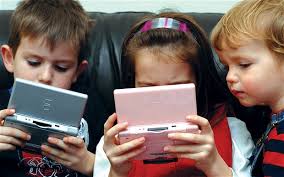
INDIANA – As a Youth First Social Worker, I interact with children in an elementary school setting daily. Most students I serve have electronics available worldwide, such as cell phones, tablets, video games, the internet, and social media.
Unfortunately, there is the risk of exposure to material parents are unaware of and wouldn’t approve of. Recognizing and understanding how electronics can play a factor in your child’s development is key to their growth.

Limiting exposure to electronics has proven beneficial to children in several ways. Some of these benefits include increased creativity, socializing, and better sleep. Limiting exposure can also benefit one’s overall physical health, such as decreasing the risk of obesity and other health conditions related to obesity (diabetes, cardiovascular issues, etc.).
There are several ways to limit the use of electronics. Setting aside a specific time (with a time limit) to use electronics, monitoring your child’s activity, using parental controls, and encouraging other activities are just a few. Some alternative activities may include playing a board game, reading a book, playing outside, or doing arts and crafts.

Many of us are guilty of spending too much time with electronics and the internet. Unfortunately, many parents today are so busy that electronics are a quick form of entertainment for their children. Parents are spread thin between working, running the household, and all the daily tasks and sometimes need that “20-minute break.”
The negative effects associated with long-term electronic use are prevalent in school-aged children. Some of these effects include sleep deprivation, internet addiction, sensory overload, and cyberbullying. I often observe these issues as a social worker in an elementary school setting.
Parenting in our current electronic-based world is no easy task, but setting guidelines for electronic use at an early age is imperative. Explain to your child the reason behind the guidelines and find a replacement activity instead. Zone in on your child’s interests and hobbies, giving them choices of how they would like to spend their free time.

According to www.pewresearch.org, parents reported that the most common device their young children use is a television, with 88 percent of parents saying their young child only uses or interacts with a television.
The following statistics relate to the children and families I serve at the elementary school level:
- 54 percent of children ages 5-8 use a desktop or laptop, while 73 percent of children ages 9-11 use a desktop or laptop
- 80 percent of children ages 5-11 use or interact with a tablet
- 59 percent of children ages 5-8 engage with a smartphone, whereas 67 percent of children ages 9-11 engage with a smartphone
It is no secret that technology greatly influences our world, and it is our responsibility to prepare our children for this. Having the tools, feeling informed, and being ready to help your child navigate our ever-changing technological world can make all the difference in their success.

Kelly Leavitt, MSW, LSW, is a Youth First Mental Health Professional at Highland Elementary School in Vanderburgh County. Youth First, Inc., is a nonprofit dedicated to strengthening youth and families. Youth First provides 90 highly trained mental health professionals (primarily master’s level social workers), prevention programs, parent engagement coordinators, and bilingual support personnel to 125 schools across 14 Indiana counties. Over 52,000 youth and families yearly are served by Youth First’s school-based social work and community programs that promote mental health, prevent substance misuse, and maximize student success. To learn more about Youth First, visit youthfirstinc.org or call 812-421-8336.



